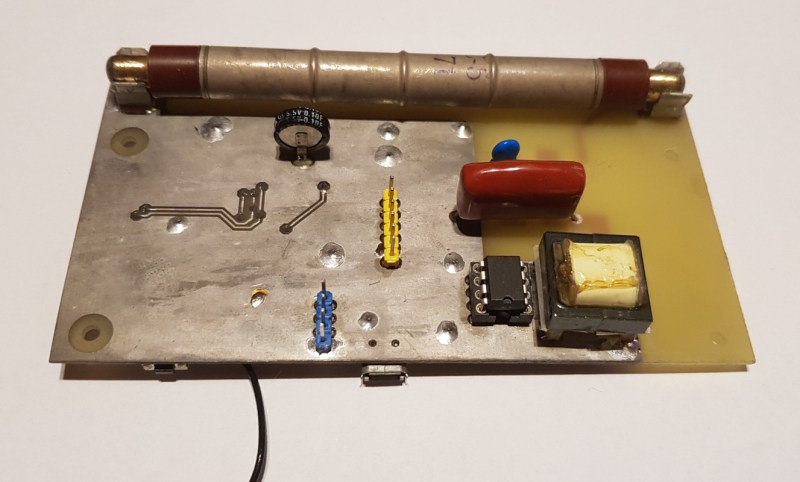[Marek] has an impressive collection of old Soviet-style Geiger counters. These are handy tools to have in some specific situations, but for most of us they would be curiosities. Even so, they need some help from the modern world to work well, and [Marek] has come up with some pretty creative ways of bringing them into the 21st century. This version, for example, adds WiFi capabilities.
This build is based on the STS-5 Geiger tube but the real heavy lifting is handled by an ESP8266 which also provides a wireless network connection. There are some limitations to using an ESP8266 to control a time-sensitive device like a Geiger tube, especially the lack of local storage, but [Marek] solves this problem by including a real-time clock and locally caching data until a network connection is re-established. Future plans for the device include adding temperature and atmospheric temperature sensors.
Eventually this Geiger counter will be installed in a watertight enclosure outside so [Marek] can keep an eye on the background radiation of his neighborhood. Previously he was doing this with another build, but that one only had access to the network over an Ethernet cable, so this one is quite an upgrade.


















To ensure accurate readings Geiger counters need to be checked with known sources periodically. This becomes even more important when you are trying to measure low level things like background radiation. Actual background radiation monitors have their own sources that they expose to the detector at programmed intervals.
And background radiation count rates can vary over time, depending, for example, on temperature and barometric pressure, or if the Geiger counter is moved to a different location. Also the high voltage should be set to be within the plateau region to minimize rate changes due to HV fluctuations.
Yes, I know. But it was never my intention to create accurate, calibrated scientific instrument.
I just wanted to have a tool that allow me to indicate if everything is fine or if there was some suspicious rise of background radiation level. And it does just that. Readings are consisted among STS-5 all tubes I have and match expected level of background radiation where I live. Some time ago I was also able to confirm that those tubes react to weak natural radiation of some minerals.
And I should mention that STS-5 was designed to measure low levels of radiation, close to the background.
HV produced by switching converter is within the range specified in documentation.
do you have the schematics ?